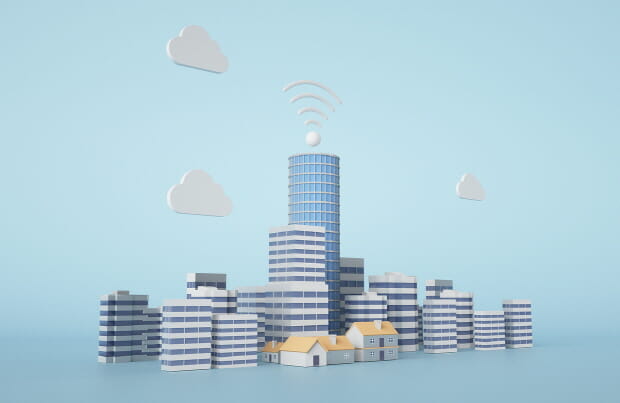
The coverage and quality of 5G mobile communication, a second-year service, improved rapidly. However, there are still many aspects that are lacking in the aspects that users experience. In the case of LTE service, it was also confirmed that the data transmission speed was slow.
Accordingly, the government has set a policy direction to pursue both quantitative and qualitative growth of 5G services.
On the 30th, communication policy officer Hong Jin-bae of the Ministry of Science and Technology and Information and Communication said, “We are building 5G nationwide villages by 2022 and promoting competitive investment by telecommunications companies through quality evaluation twice a year” at an online briefing as a result of communication service coverage check and quality evaluation.
He also said, “It is difficult to compare uniformly, but looking at the results of recent announcements by overseas evaluation agencies such as Rootmetrics and Open Signal, we believe that the level of 5G in Korea has risen considerably.” There is a way, and I will try harder next year by strengthening quality evaluation.”
He added, “To ensure that all users can enjoy high-quality communication services, we will continue to conduct quality assessments for LTE services as well as 5G in cities, rural areas and vulnerable areas.”
■ 5G is faster, LTE is slower
According to the results of the first 5G quality evaluation conducted twice this year, the average 5G download speed of the three telecom companies rose from 656.56 Mbps in the first half to 690.47 Mbps in the second half.
The rate of conversion to LTE while using 5G within 5G coverage was an average of 5.49% when downloaded and 5.29% when uploaded, showing a slight improvement from the first half.
While the quality of 5G service has improved remarkably within half a year, the quality of LTE service has been partially lagging.
Looking at the measurement results for the second half of this year, the average LTE download speed is 153.10Mbps. It fell 5.43 Mbps from 158.53 Mbps last year. In addition, the LTE upload speed averaged 39.31Mbps, down 3.52Mbps compared to 42.83Mbps in 2019.
This is the first time that data transmission speed has slowed since the LTE service was launched in 2011.
Director Jin-bae Hong said, “The reason for the slowdown of LTE speed needs to be understood in detail, but there is a difference in rural areas, but I think that maintenance needs to be performed more.” “There is a slight difference in urban areas, but by the NSA method (5G service) LTE resources We are trying to figure out whether the aspect of using some of the effects has affected it.”
On the other hand, if the three communication companies switch from the NSA mode to the SA method, there is a high possibility that the 5G data transmission rate will be slowed down.
In NSA mode, LTE and 5G are mixed and the total frequency is wide, so data traffic processing is easier than in SA mode. On the other hand, in terms of connection delay speed, etc., superior evaluation results are expected in SA mode.
Even after switching to SA mode, additional frequency supply is needed to facilitate 5G data rate and data traffic management.

■ 5G coverage has expanded, but multi-use facilities are still insufficient
The coverage problem, which was the most dissatisfied with 5G service, seems to have improved substantially.
It is difficult to compare it with the announcement in the first half of the year, which was checked by random extraction between Seoul and six metropolitan cities, but it is evaluated that 5G coverage has expanded to major downtown areas in 84 cities.
The 5G coverage area of 85 cities is LG U+ 6,64.28 ㎢, SK Telecom 5,242.68 ㎢, and KT 4,920.97 ㎢, respectively.
This figure is based on the coverage map directly submitted by the news agency, and the government checked that there was no overstatement. In other words, 5G communication does not occur, but there are no areas marked as possible.
As such, 5G coverage has expanded, but there are still many shortcomings due to the second-year service level.
Looking at the status of 5G deployment of multi-use facilities by telecommunications company, 910 of KT, 857 of SK Telecom, and 822 of LG U+ were found among in-building facilities. As an outdoor base station, there are 2,879 facilities for KT, 2,200 for SK Telecom, and 708 for LG U+.
The figure is still low considering 4,516 major multi-use facilities in 85 cities nationwide.
Related Articles

[일문일답]”When both 5G coverage and transmission speed are important”

5G service, speed is SKT, coverage is LGU + multi-facility is KT

I measured the 5G speed by dividing the operator and facility…

5G speed, 4 times faster than LTE
In terms of transportation infrastructure, out of 649 subway stations nationwide, the average of 424 stations with 5G service is installed. Although most of 5G was built in major stations of KTX and SRT, 5G construction in major sections of high-speed rail is still insufficient.
In addition, 72 of the 102 sections of the 20 major routes on the highway have 3 telecom companies on average.
